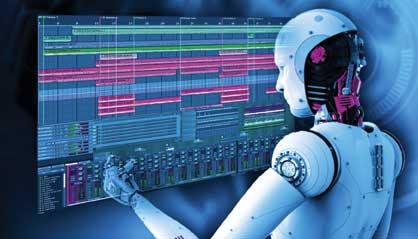Ullas Ponnadi
This article series, in four parts, will address the various dimensions of music; as an experience via its various art forms, as auditory and visual perceptions via the science behind it, and then attempt to bring together what a child learns in K12 as the science of sound, the physics and math of it, to pursue a career in sound production, become a musician, or simply, an ardent music lover, by understanding the intricate forms of sound.
Since time immemorial, sound has been a key source of communication within nature. Birds, bees, whistle of the foliage, thunder, the whisper of air, dolphins speaking under water and many more such forms and shapes of sound are some of the visible examples created by nature, with well-defined purposes.
If one were to meander through a dense, human uninhabited forestland, and tip toe in silence, the various forms of the above sounds can be experienced in its raw form, and is a fascinating raw, musical experience! A music that does not have a well-defined structure, but nevertheless, an experience worth savouring!
We all know that sound and its associated emotions has been a primary source of human communication. Primordial sound followed spoken words, and then written forms of expressions, and eventually literature and visual media that combined sounds and colourful visuals to create music, drama, and then street plays and movies.
In this process of evolution, what is the definition of music and what is its role?
In a highly simplified form of its definition, music is just a set of sound patterns, frequencies within rhythms, that evokes various emotions in the listener. It does not matter who creates that sound, it could be an animal or a bird or a human being, or nature itself. The emotion of the sound pattern is important, for that carries a whole set of meaning that transpires the sound and its formations itself!
Why is that important? We will get to that point a while later.
How did music evolve from sound? Did music exist in nature? Did humans create and develop it? Are other life forms capable of creating music, and more importantly, help evolve music?

We all know that a set of sound patterns, if created the right way, evokes emotions in the listener. Some sounds are annoying, some are pleasant. The sound of a bulbul is very pleasant, the sound of a lion’s roar can be intimidating. The sound of a nail scratching against the wall is extremely unpleasant while a mother’s lullaby is the best for a child to be at peace and sleep.
So, in the context of life, and life as captured and presented in audio visual forms, as in plays, theatres, movies and music, the role of sound, and its pure form as music, occupies an envying space and has evolved and morphed across centuries.
As technology evolved, the desire to capture sound and then reproduce it later became a fascination. Not only did this allow the various art forms to be captured and archived, it also allowed the art form of sound to be more democratic and enabled wider reach to the audience.
Over the past few decades, a combination of sophisticated technology and the ability to modify and morph sound, and also create sounds of various types and genres is giving rise to this question: Can technology, via Artificial Intelligence, create sounds of various forms, and more importantly,music of various forms, by itself? Will the role of a human become less and eventually vanish? Can soft robotics become the creators and performers of symphonies, jazz, rock and pure classical music? Can such technologies replace all of human voice strength, and the thousands of musical instruments that exist today in the world?
Let us save the discovery of that to the next part of this article…
The author is an EdTech Entrepreneur and a Learning Consultant with 3+ decades of experience in IT Engineering, Innovation, and Learning spaces. He is the co-founder of four ventures, starting year 2013. He is very passionate about education and learning, and its power to transform young minds and keep the old young. He can be reached at uponnadi@gmail.com.
